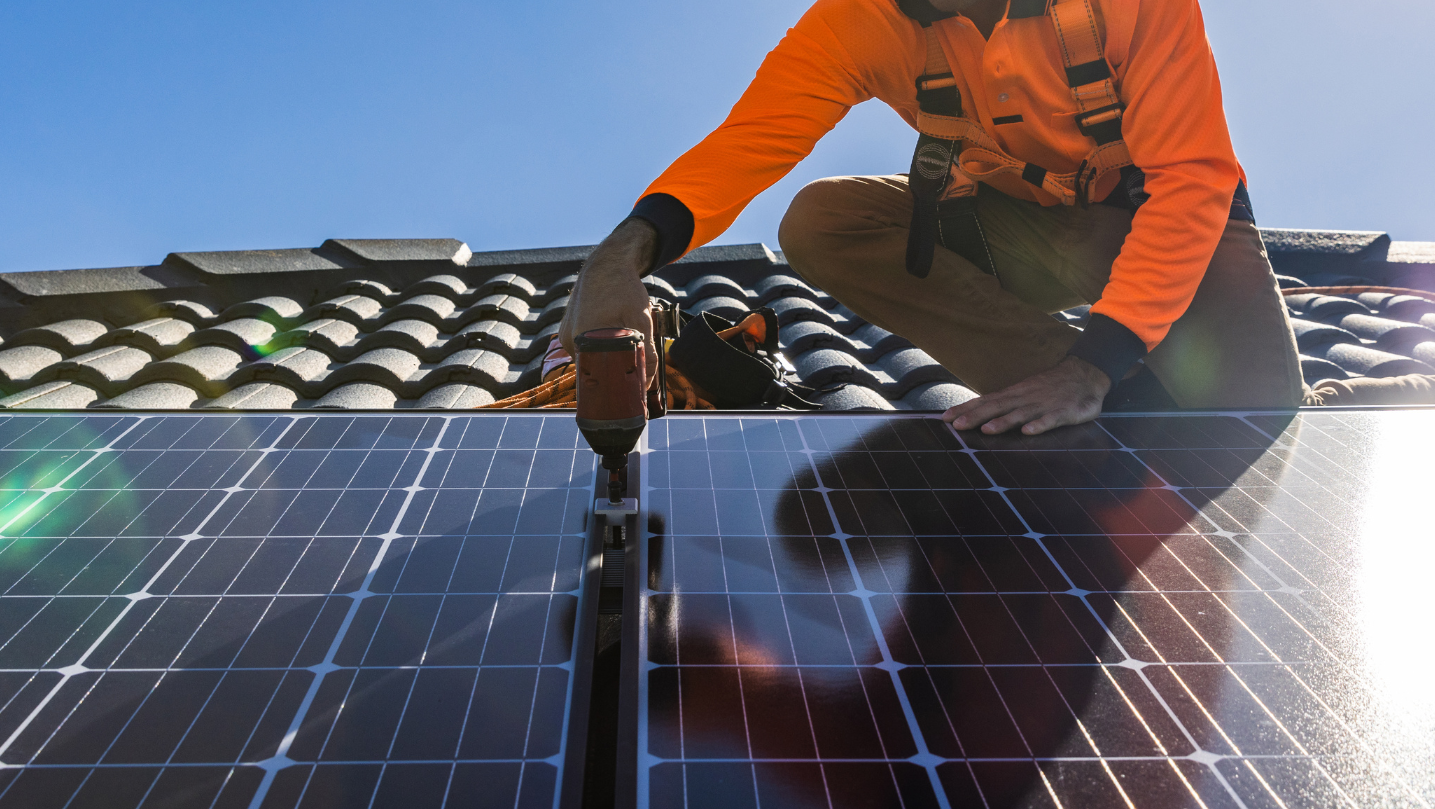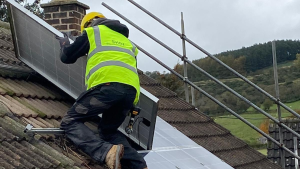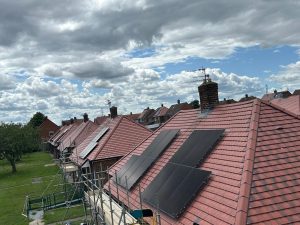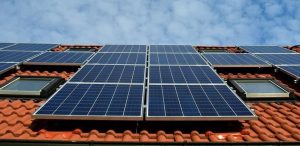Installing solar panels on a new housing development? If you’re a housebuilder, developer or planning manager, it’s worth reading up on the Future Homes Standard (FHS), because it’s about to reshape how new homes are built in England – and solar PV will play a big role in that.
What is the Future Homes Standard?
The Future Homes Standard is the UK government’s plan to make new homes more energy efficient, lower-carbon and cheaper to run. While the detailed regulations are still being finalised, it was confirmed in June 2025 that solar panels will become a functional requirement for most new build homes in England.
This means that rooftop solar is set to become standard unless a development meets strict exemption criteria (e.g., heavy shading or heritage restrictions).
The schedule is expected to roll out as follows:
- Autumn 2025: Final Future Homes Standard regulations published
- December 2026: Regulations become law
- Throughout 2027: Transition period, with all new homes required to meet the FHS by December 2027
What the Future Homes Standard means for developers
Solar needs to be factored in from day one
Solar PV can no longer be an afterthought. The most effective way to comply with the FHS is to integrate solar early in the roof design and electrical planning stages. That means thinking about roof pitch, orientation, shading, wiring and structural load from the get-go.
Cost planning now, savings later
While adding solar panels does add upfront cost, the long-term savings for homeowners are significant. The government estimates that households in new build homes could save around £530 a year on energy bills, thanks to rooftop solar.
Developers who plan for solar now can avoid retrofitting costs later, steer clear of compliance issues and deliver homes that are cheaper for homeowners to run.
Consider exemptions carefully
Not all new build sites will be suitable for solar. Shading, orientation, conservation area restrictions or tree cover can all limit the practicality of rooftop PV. Some sites may qualify for exemptions or alternative compliance options, but these need to be documented and justified at the planning stage.
Risks of non-compliance or retrofitting
If solar isn’t properly considered early on, developers could face costly retrofits, compliance headaches or disgruntled buyers. Housebuilders who wait until after construction to add panels may struggle with structural or planning constraints and risk under-delivering on the homeowner benefits that the FHS promises.
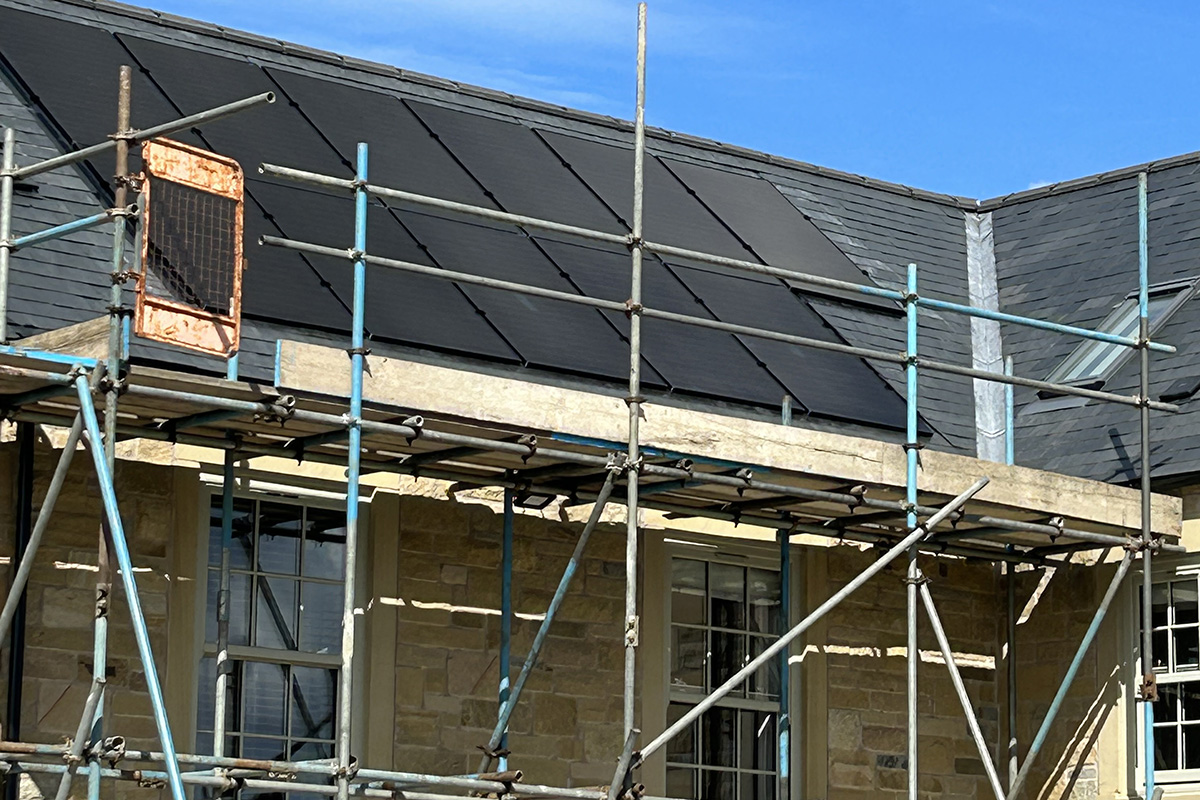
How builders can prepare
Work with solar experts early
Bring in solar PV specialists like SWH Electrical Solutions during the design and planning phase. That way, solar modules, electrical wiring, cable layouts and load calculations can be built into SAP (or the upcoming Home Energy Model) compliance documents and construction schedules.
Model energy performance
Use design-stage modelling to understand how much solar generation a roof can deliver, taking into account shading, orientation and energy demand. Accurate modelling helps determine panel layout, identify potential performance issues and feed into developer SAP/HEM and EPC assessments.
Factor in battery storage and low-carbon heating
Solar panels are only one part of the Future Homes Standard. Builders should also consider battery storage to utilise excess energy and low-carbon heating technologies like heat pumps, which are also expected to be standard in new homes under the FHS.
Develop maintenance and handover plans
Homeowners will expect solar systems to perform over the long term. Developers should plan for commissioning, handover documentation, warranty periods and potential maintenance services. Providing homeowners with clear guidance and support materials will help ensure performance, satisfaction and longevity.
Why partner with SWH?
At SWH Electrical Solutions, we’ve worked closely with housebuilders, housing developers and new build contractors across the North East to deliver solar PV systems that meet regulatory standards, enhance energy performance and are designed to suit homeowners’ needs – they’re not just a compliance tick-box.
As an in-house team with design, roofing, electrical and scaffolding expertise, we specialise in planning, feasibility and full solar installations for new builds. That means you get early design input, CAD-supported layout, planning-stage advice and on-time installation with minimal disruption.
We’re also MCS-certified and experienced with SAP/HEM modelling and documentation, so we’re able to help developers navigate the Future Homes Standard with confidence.
The Future Homes Standard represents a major shift in how new homes are built in England. Solar panels, which were once a nice add-on, are set to become a key requirement rather than an option. Developers who take this seriously now and plan accordingly will avoid jumping through retrofit hoops, meet compliance and deliver homes that are cheaper to run and greener to live in.
If you’re involved in building, developing or planning new homes, it’s time to think about solar not as an add-on, but as a key piece of the whole housing package.
Get in touch to discuss how SWH can support your new build solar strategy – feasibility, design, install and handover included.
Future Homes Standard – Solar FAQs for developers
When does the Future Homes Standard come into force?
The final regulations are expected in autumn 2025, with implementation by December 2026. A transition period will run until the end of 2027, after which all new homes in England must comply.
Will all new build homes need solar panels?
In most cases, yes. Solar PV will be a functional requirement for new homes under the Future Homes Standard, unless a property qualifies for an exemption, such as heavy shading, heritage restrictions or unsuitable roof design.
What are the estimated savings for homeowners?
The government estimates households could save around £530 a year on energy bills thanks to rooftop solar under the FHS.
Do developers need to install battery storage too?
Battery storage is not a legal requirement under the FHS, but it is strongly recommended to maximise the benefits of solar. Many developers are future-proofing homes by including batteries to store surplus electricity and reduce reliance on the grid.
How will solar installations be assessed for compliance?
Energy performance will be measured using SAP or the upcoming Home Energy Model (HEM). Developers will need to show that solar PV is integrated into their energy strategy for new builds.
Can developers work with any installer?
No – solar systems must be installed by an MCS-certified contractor to comply with standards and qualify for schemes like the Smart Export Guarantee (SEG). SWH is fully MCS-certified and experienced in working with housebuilders.
What happens if solar is not factored in early?
Leaving solar until after construction could lead to structural, planning or compliance issues – not to mention costly retrofits. Integrating solar at the design stage avoids these risks.
Can SWH work on large developments as well as single plots?
Yes. SWH supports both volume housebuilders and smaller developers. Our approach covers feasibility, design, roofing, scaffolding, installation and handover.
What if a development site isn’t suitable for solar?
Sites with significant shading, poor orientation or planning restrictions may qualify for exemptions – but developers must provide justification during planning.
How can developers prepare now?
The best step is to partner with a solar contractor early. Engaging with SWH at the planning or design stage ensures solar PV is integrated properly into compliance documents, layouts, and construction schedules.


